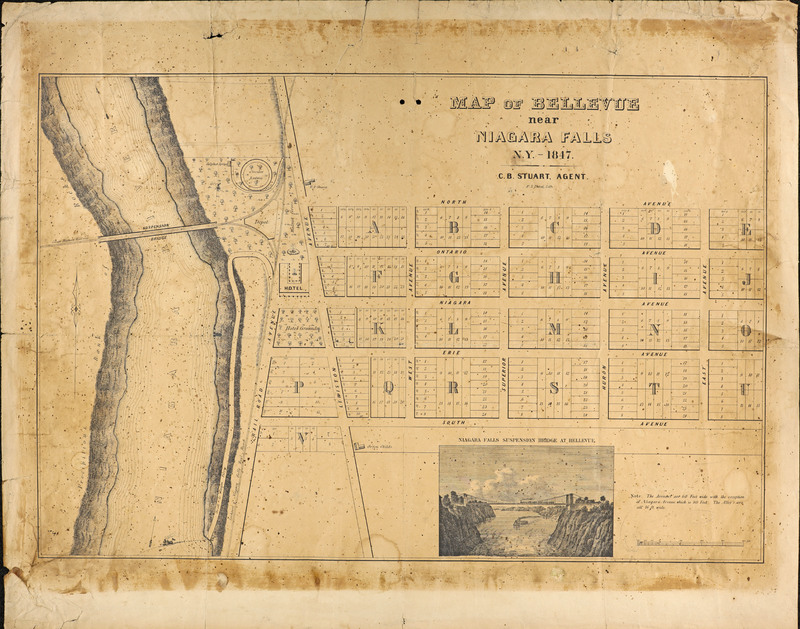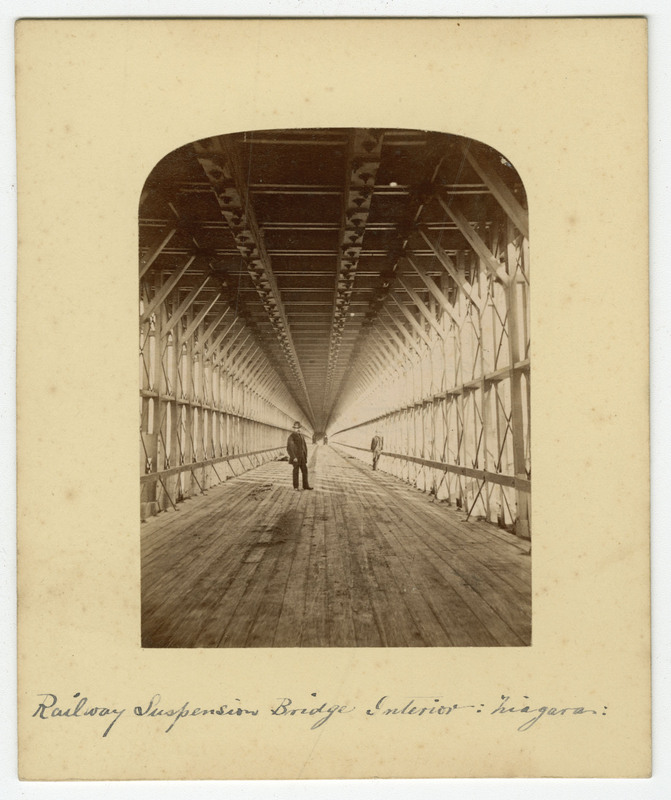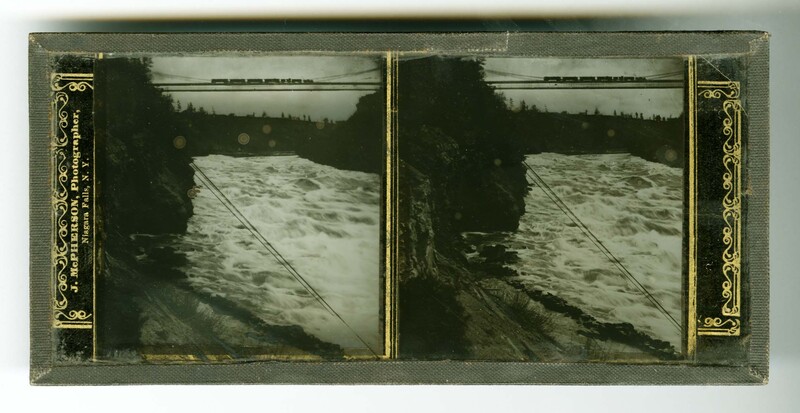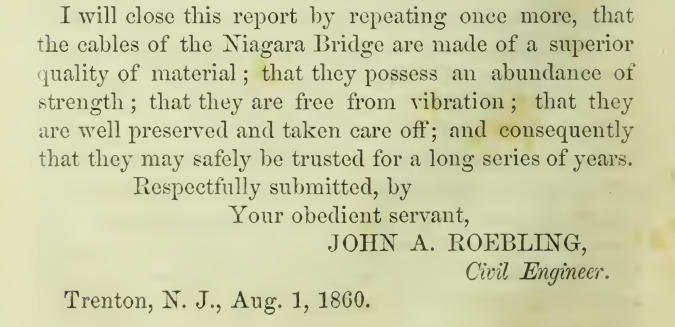The Old Suspension Bridge
This is the story of the first working railway suspension bridge in the world. In 1846-1847, the bridge received its American and Canadian charters. The Canadian directors involved were: W.H. Merritt, Thomas C. Street, James Cunningham, Charles B. Stewart, James Oswald, Samuel Zimmerman and William O. Buchanan. The work began in February of 1848. Charles Ellet, the chief engineer, began construction on a single level suspension bridge. The first connection between the two sides of the cliff was made by a boy named Homan Walsh who flew a kite across the Niagara River gorge. A cord was drawn over, and then a rope. Eventually, an iron cable of 36 strands of no. 10 wire was drawn across. A small wooden tower was erected on each bank and a wire cable was hauled across the chasm. On March 13, 1848, Mr. Ellet and some others crossed in an iron basket suspended by the cable.
The construction was not all smooth sailing. A three foot wide bridge was built and people could pay twenty five cents to walk across. Workmen were busy on the second footbridge when a tornado struck and turned it over. At this time, there were six men working on the bridge. Two of the men made their way to shore on fragments of boards while the other four were supported by two strands of the no. 10 wire. As soon as the wind subsided, a fellow worker manned the iron basket and placed a ladder within reach of the men so that they could be brought to safety. In 1854, two workers died in a scaffolding collapse during work on the railway bridge.
On the 26th of July, Mr. Ellet drove a horse and buggy over the bridge and back. The bridge opened in August of 1848. Ellet later left the project due to financial disputes with the directors. It was in 1851 that John A. Roebling was commissioned to begin work on the railroad bridge. Roebling used Ellet's footbridge as scaffolding as he began work on the bi-level bridge. In 1854, the lower deck was open to pedestrian and carriage traffic. The upper deck was opened to railway cars in the spring of 1855. The first locomotive crossed from Canada to the United States on March 8, 1855. The bridge was 825 feet long and it was in operation from 1855 to 1897.
It is interesting to note that there were rules that people had to abide by when crossing the bridge.
1. Groups of men or troops were ordered to march out of step when crossing the bridge. This infraction would incur a $50-$100 fine.
2. No musical band was allowed to play unless they were seated in a wagon or carriage. The price for this infraction was not listed.
3. Horses had to walk over the bridge - not canter. There was a five dollar fine for this.
4. Horses or buggies could not stop on the bridge for any longer than was necessary. This would also incur a five dollar fine.
It was also strictly enforced that no more than 20 heads of cattle and two drovers would cross together at any given time.









